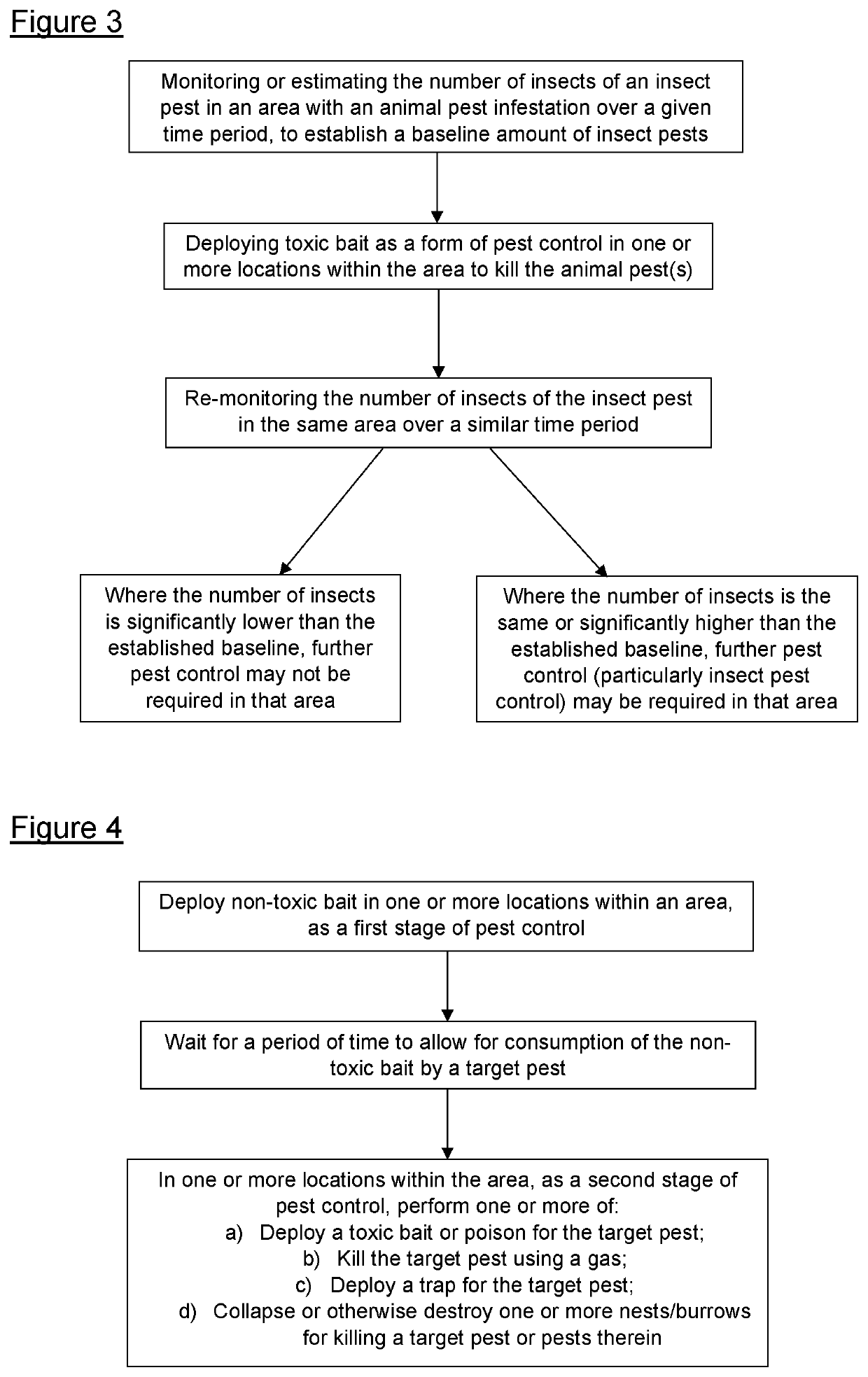Bait for a pest
- Summary
- Abstract
- Description
- Claims
- Application Information
AI Technical Summary
Benefits of technology
Problems solved by technology
Method used
Image
Examples
first embodiment
[0171]FIG. 1 shows bait, indicated generally at 10. The bait 10 is a solid, substantially dry mass in the form of a block or pellet 12. The bait 10 in this embodiment is rodent bait.
[0172]The body 12 of the bait 10 is made of a dry foodstuff 12 for a rodent. The dry foodstuff in this embodiment is a grain or cereal.
[0173]A poison which is a rodenticide is included in the body 12 to make the bait 10 a toxic bait for a rodent. The poison may be any suitable rodenticide and is provided in a suitable quantity for killing a rodent.
[0174]The body 12 of the bait 10 also includes a mollusc deterrent. Examples of suitable mollusc deterrents which are also suitable as a foodstuff or attractant for a rodent include: fennel, rue, anise (or aniseed), Astrantia, geranium, Japanese anemone, begonia, sage, cyclamen, nasturtium, lantana, Jacob's ladder, columbine, snapdragon, yucca, caffeine, grapefruit, cornmeal tea, rooibos tea, and garlic or garlic extract.
[0175]It is not envisaged that all of th...
second embodiment
[0183]FIG. 2 shows bait, indicated generally at 20. The bait 20 is a solid, substantially dry mass of grain 22. The bait 20 in this embodiment is again rodent bait.
[0184]An outer portion 24 of the bait body 22 is also made of grain but has been coated with a mollusc deterrent. In some embodiments, the coating may be provided by spraying the bait with the mollusc deterrent and then drying the bait 20. This means that the exterior of the bait 20 is primed to deter terrestrial molluscs, but the middle of the bait 20 is not. This may be preferred where the mollusc deterrent has some deterrent effect for rodents and thus it is advantageous to minimize the amount of mollusc deterrent. The thickness of the outer portion or layer 24 may vary in different embodiments.
[0185]The mollusc deterrent is selected from the options provided for the first embodiment.
[0186]The bait 20 does not include a rodenticide in this embodiment. The grain acts as a rodent attractant, and the mollusc deterrent may...
PUM
 Login to View More
Login to View More Abstract
Description
Claims
Application Information
 Login to View More
Login to View More - R&D
- Intellectual Property
- Life Sciences
- Materials
- Tech Scout
- Unparalleled Data Quality
- Higher Quality Content
- 60% Fewer Hallucinations
Browse by: Latest US Patents, China's latest patents, Technical Efficacy Thesaurus, Application Domain, Technology Topic, Popular Technical Reports.
© 2025 PatSnap. All rights reserved.Legal|Privacy policy|Modern Slavery Act Transparency Statement|Sitemap|About US| Contact US: help@patsnap.com


